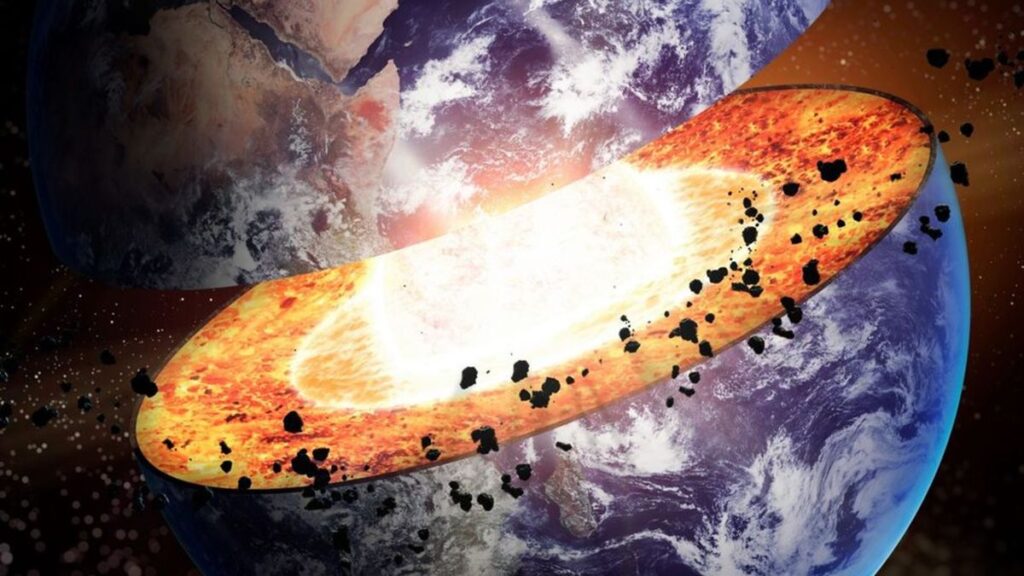Potential patches of Earth’s ancient crust, sometimes called “sunken worlds,” may have just been discovered deep within the mantle, thanks to a new way of mapping the inside of our planet. However, these mysterious blobs appear in places they should not, leaving researchers scratching their heads.
For decades, scientists have been building up a better picture of Earth’s interior by using seismographs — 3D images created by measuring how seismic waves from earthquakes reverberate deep within our planet. This method has helped scientists identify ancient sections of the planet’s crust, known as subducted slabs, that have been pulled into the mantle through subduction zones where tectonic plates meet. For example, in October 2024, researchers announced the discovery of a section of seafloor that had sunk deep into the mantle below Easter Island.
In a study published Nov. 4, 2024, in the journal Scientific Reports, researchers revealed that they had discovered “numerous” potential subducted slabs throughout Earth’s mantle, using a new type of seismographic imaging. (Little information about the size, shape and exact locations of the blobs has been revealed so far.)
However, unlike previously identified subducted slabs, which are found in areas where tectonic plates currently collide or have previously smashed together, some of the new anomalies are located in places where no known tectonic activity has ever occurred, such as below the western Pacific Ocean. As a result, it is unclear how they ended up there.
“That’s our dilemma,” Thomas Schouten, a doctoral candidate at the ETH Zurich Geological Institute in Switzerland, said in a statement released Jan. 7. “With the new high-resolution model, we can see such anomalies everywhere in the Earth’s mantle. But we don’t know exactly what they are.”
Related: A ‘protoplanet’ that created the moon may be hiding deep inside Earth

There are other potential explanations for the newly mapped blobs. For example, they may be made of crust-like material left over from the mantle’s creation 4 billion years ago. Or they may consist of some other similarly dense material that has grown within the mantle over the past few hundred million years.
However, these are just alternative theories. At the moment, the identity of these blobs remains a “major mystery,” ETH Zurich representatives wrote in the statement.
Finding “sunken worlds”
Until now, everything we know about Earth’s innards has come from stitching together different seismographs created from different individual earthquakes across the globe. But in the new study, researchers used a new method, known as full-waveform inversion, which uses computer models to combine these seismographs into a single clear image.
This is a computationally intensive method, and to pull it off, researchers had to run the model on the Piz Daint supercomputer at the Swiss National Supercomputer Center in Lugano — formerly Europe’s most powerful computer — to crunch the numbers.

Study co-author Andreas Fichtner, a seismologist at ETH Zurich who created the full-waveform model used in the new research, compared the use of full-waveform inversion to medical imaging advancements. Imagine a doctor has been studying the circulatory system for decades, Fichtner said. “Then, if you give [them] a new, better examination tool, [they] suddenly see an artery in the buttock that doesn’t really belong there,” Fichtner explained. “That’s exactly how we feel about the new findings.”
Researchers think the newly discovered blobs may be subducted slabs, largely because seismic waves travel through them both at the same speed. But this does not guarantee that they are the same thing, and more research is needed to assess whether they are actually alike.
“We have to calculate the different material parameters that could generate the observed speeds of the different wave types,” Schouten said. “Essentially, we have to dive deeper into the material properties behind the wave speed.”
